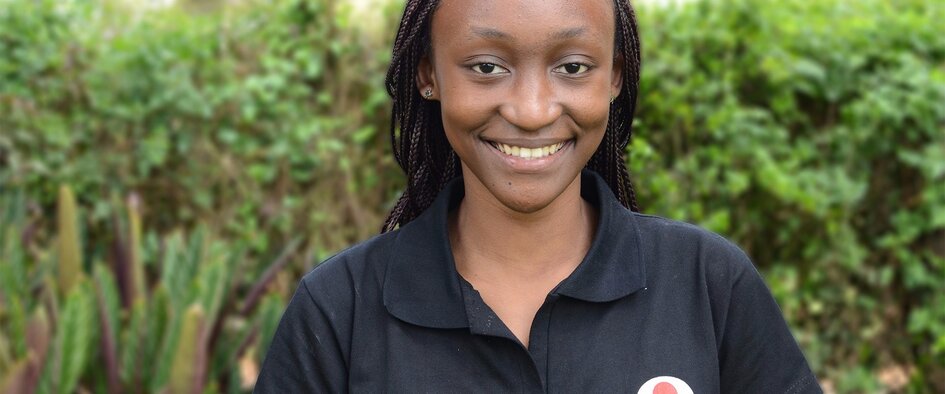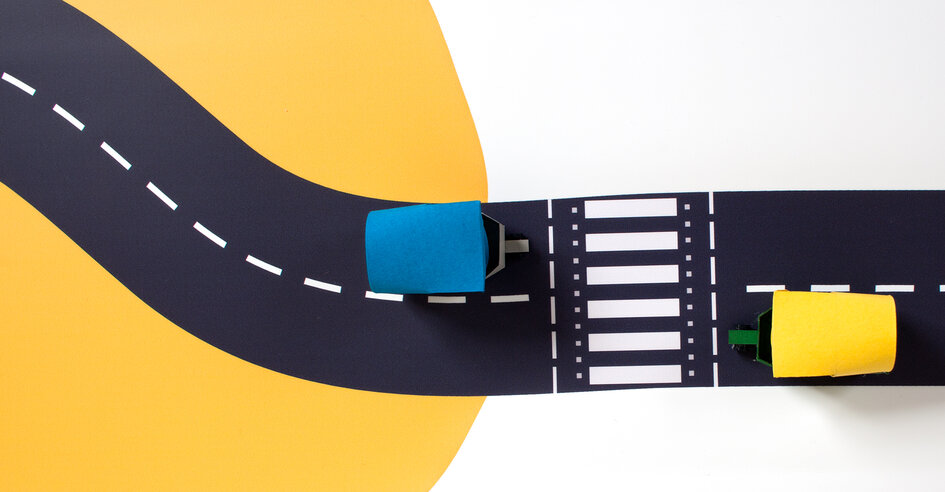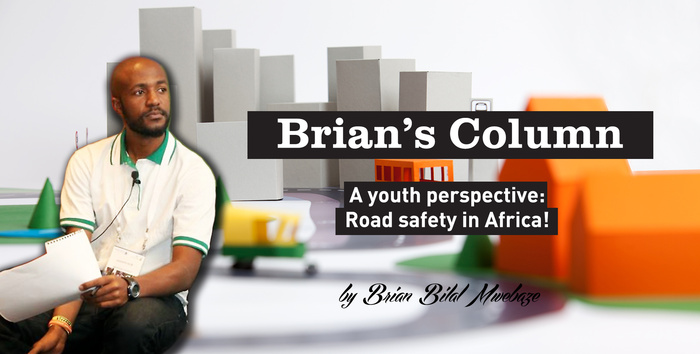
Youth for Road Safety in action – Our Annual Report 2018 is now ready to view
Foreword to Annual Report 2018
I am proud to report that in 2018 we ramped up our advocacy efforts. We have been part of multiple high-level panels promoting our key-messages on youth and road safety issues. For example, together with the European Office of the World Health Organization, YOURS organized and chaired a session on meaningful youth participation in road safety in Malta; we were part of the Safety Conference in Thailand and joined multiple strategic initiatives around the world such as the Commonwealth Road Safety Initiative.
 In 2018 the World Health Organization launched the latest Global Status Report on Road Safety. It stated that road traffic injuries are now the leading killer of people aged 5-29 years. In the past decade there has been success in providing safe mobility for young people in some parts of the world but it is clear that much more needs to be done.
In 2018 the World Health Organization launched the latest Global Status Report on Road Safety. It stated that road traffic injuries are now the leading killer of people aged 5-29 years. In the past decade there has been success in providing safe mobility for young people in some parts of the world but it is clear that much more needs to be done.
When my children make a mess, I ask them to clean it up. However, this #1 global health threat to children and young people is not their mess, nor their fault. Let us please stop blaming young people for dying on our roads.
YOURS asks for a paradigm shift in thinking. Youth pay a heavy toll for a broken mobility system and they have a right to be at a very minimum, informed about it. Besides being informed, they need to be consulted and included in developing a safer system.

With the UN Global Road Safety Week mind, I ask our road safety youth champions to #SpeakUp for #RoadSafety and start being loud. Let your voices be heard and demand a safe journey. And while you urge decision makers to do so, claim a seat at the decision-making table. You deserve to be part of the solution and ensure that your needs are being heard.
 The other side of the coin is for young people to act as role models. And although I understand that especially in LMCIs you often have no safe choice to travel, there are many things that are in the control of your own hands. You can speak up when your public service vehicle is speeding, or the driver is distracted.
The other side of the coin is for young people to act as role models. And although I understand that especially in LMCIs you often have no safe choice to travel, there are many things that are in the control of your own hands. You can speak up when your public service vehicle is speeding, or the driver is distracted.
You can make your friends aware of the risk of not wearing a seatbelt and ensure you always wear one yourself, you can promote being visible while walking at night and never drink or drug driving.
In conclusion I thank all of our partners, collaborators and donors for your support; further details are highlighted in this report. I look forward to further expand our impact in the years to come.
Floor Lieshout
Executive Director



 Lisa’s comments, while frank, carry a note of optimism. She believes that as a country, we can change the situation. What’s more, young people have a role to play – more on this below.
Lisa’s comments, while frank, carry a note of optimism. She believes that as a country, we can change the situation. What’s more, young people have a role to play – more on this below.
 Young people can demand change
Young people can demand change



 Road Safety:
Road Safety:

 The commonest way is to grab an airport taxi. This is equivalent to being driven to the airport by a friend (or whatever you prefer to call him/her). We all know how this will go, as you will be chillaxing in a traffic jam for more time than you will be on that plane. It won’t be long before you begin to curse your gods.
The commonest way is to grab an airport taxi. This is equivalent to being driven to the airport by a friend (or whatever you prefer to call him/her). We all know how this will go, as you will be chillaxing in a traffic jam for more time than you will be on that plane. It won’t be long before you begin to curse your gods. The second best alternative, take public transport? A suicidal mission? Maybe! Many will agree for its sheer consistency in delays most often making unsolicited stopovers literally anything and everywhere: from dropping a passenger 100m from where they were picked to someone wanting to buy a fruit from the hawker et.al. Mind you, this bus or whatever it is, shall stop 5+km away from the airport. You can (almost) be guaranteed to arrive too early for your next probable flight.
The second best alternative, take public transport? A suicidal mission? Maybe! Many will agree for its sheer consistency in delays most often making unsolicited stopovers literally anything and everywhere: from dropping a passenger 100m from where they were picked to someone wanting to buy a fruit from the hawker et.al. Mind you, this bus or whatever it is, shall stop 5+km away from the airport. You can (almost) be guaranteed to arrive too early for your next probable flight. The third option, let’s explore them, shall we? Consider Commercial Motorcycle Service. There has been growth spurts in this line of business, with innovations from Safeboda, Uber helping to connect the customer and the biker through a tap on the phone.
The third option, let’s explore them, shall we? Consider Commercial Motorcycle Service. There has been growth spurts in this line of business, with innovations from Safeboda, Uber helping to connect the customer and the biker through a tap on the phone. Fourth option, bike your way to the airport. Possible time saving, environment, health and energy benefits. The weak clammy grip of hope doesn’t lie. Truth is, you can’t bike to most airports. Designated places for parking are inexistent in addition to the many challenges stated already for 2 wheeled vehicles.
Fourth option, bike your way to the airport. Possible time saving, environment, health and energy benefits. The weak clammy grip of hope doesn’t lie. Truth is, you can’t bike to most airports. Designated places for parking are inexistent in addition to the many challenges stated already for 2 wheeled vehicles.
 Overview of the programme
Overview of the programme

 Alex Ayub
Alex Ayub Daniel Cano
Daniel Cano Jacob Smith
Jacob Smith Shantel Jacobs
Shantel Jacobs Minh Vo
Minh Vo Rafaela Machado, Star Rating for Schools Global Coordinator said, “As SR4S Lead Partner, YOURS has been playing a valuable role in the development of Star Rating for Schools Programme, helping to shape the programme to the needs of partners and users around the world. We are very excited with the launch of the Youth Stars programme and its potential to help communities all over the world to create safer school environments. The Master Trainers are enthusiastic road safety champions that will certainly achieve great results empowering communities in demanding safer roads through evidence-based approaches, at the same time that will contribute to the continuous enhancement of the SR4S system”.
Rafaela Machado, Star Rating for Schools Global Coordinator said, “As SR4S Lead Partner, YOURS has been playing a valuable role in the development of Star Rating for Schools Programme, helping to shape the programme to the needs of partners and users around the world. We are very excited with the launch of the Youth Stars programme and its potential to help communities all over the world to create safer school environments. The Master Trainers are enthusiastic road safety champions that will certainly achieve great results empowering communities in demanding safer roads through evidence-based approaches, at the same time that will contribute to the continuous enhancement of the SR4S system”.
 “As long as people don’t feel safe walking and cycling in our towns and cities, many will be discouraged from using the most sustainable modes of transport. This can create a vicious circle because people who take the car instead put all the vulnerable road users around them at greater risk.
“As long as people don’t feel safe walking and cycling in our towns and cities, many will be discouraged from using the most sustainable modes of transport. This can create a vicious circle because people who take the car instead put all the vulnerable road users around them at greater risk.
